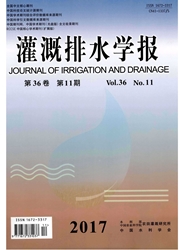

 中文摘要:
中文摘要:
当时,在这研究,主要部件分析( PCA )和地理上加权的回归( GWR )被联合在诺思中国估计冬季小麦的水要求的空间分发效果象要求正在喝进的庄稼水上的气象学的因素一样宏地志、微地志说明。在诺思中国和它的形成的冬季小麦的水要求的空间分发特征基于主要影响因素和回归系数的空间变化被分析。调查结果当 PCA 被使用影响因素处理所有时,表明 collinearity 能有效地被移开。GWR 的回归系数在空间显示了强壮的可变性,它能更好解释庄稼上的影响因素的效果的空间差别浇要求。在这研究的建议方法的评估索引比广泛地使用的 Kriging 方法更有效。而且,它能清楚地在庄稼水要求上在不同空间地点显示出那些影响因素的效果并且在那些因素突然变化的区域上提供更多的详细信息。总结,大参考意义大参考意义。
 英文摘要:
英文摘要:
In this study the principal component analysis (PCA) and geographically weighted regression (GWR) are combined to estimate the spatial distribution of water requirement of the winter wheat in North China while the effect of the macroand micro-topographic as well as the meteorological factors on the crop water requirement is taking into account. The spatial distribution characteristic of the water requirement of the winter wheat in North China and its formation are analyzed based on the spatial variation of the main affecting factors and the regression coefficients. The findings reveal that the collinearity can be effectively removed when PCA is applied to process all of the affecting factors. The regression coefficients of GWR displayed a strong variability in space, which can better explain the spatial differences of the effect of the affecting factors on the crop water requirement. The evaluation index of the proposed method in this study is more efficient than the widely used Kriging method. Besides, it could clearly show the effect of those affecting factors in different spatial locations on the crop water requirement and provide more detailed information on the region where those factors suddenly change. To sum up, it is of great reference significance for the estimation of the regional crop water requirement.
 同期刊论文项目
同期刊论文项目
 同项目期刊论文
同项目期刊论文
 期刊信息
期刊信息
